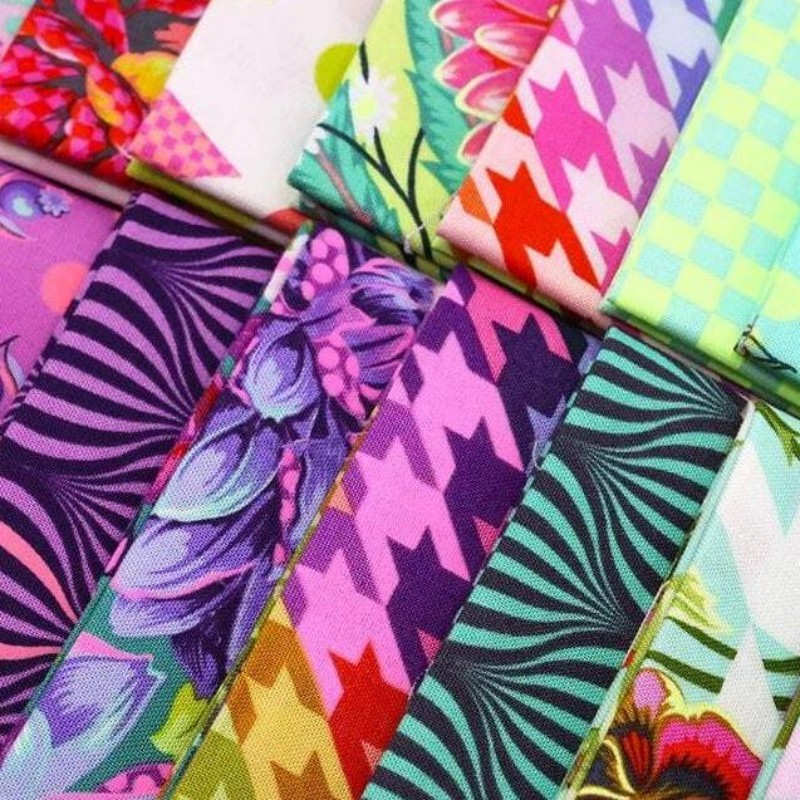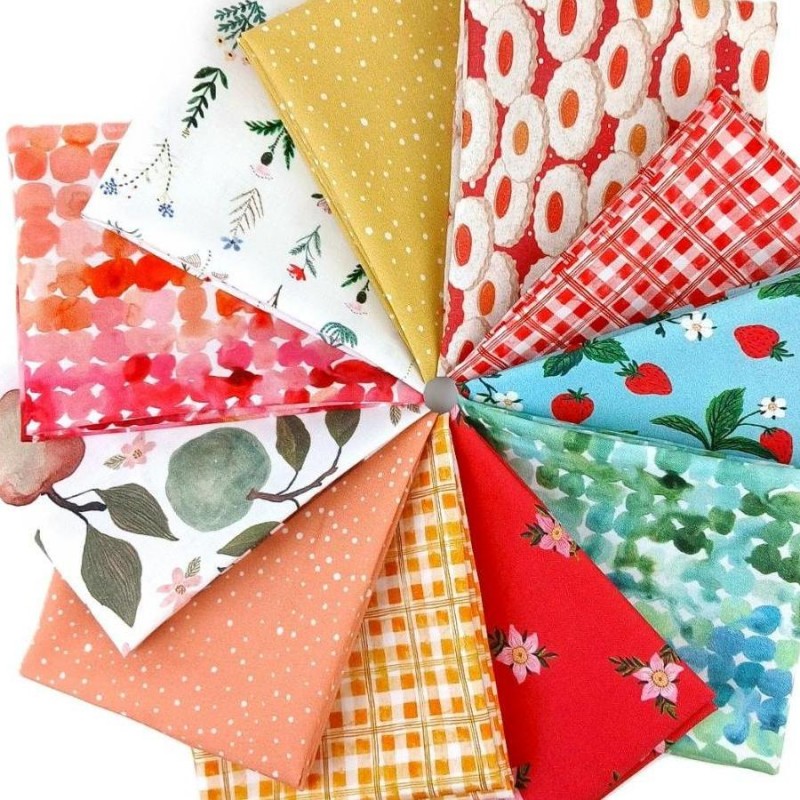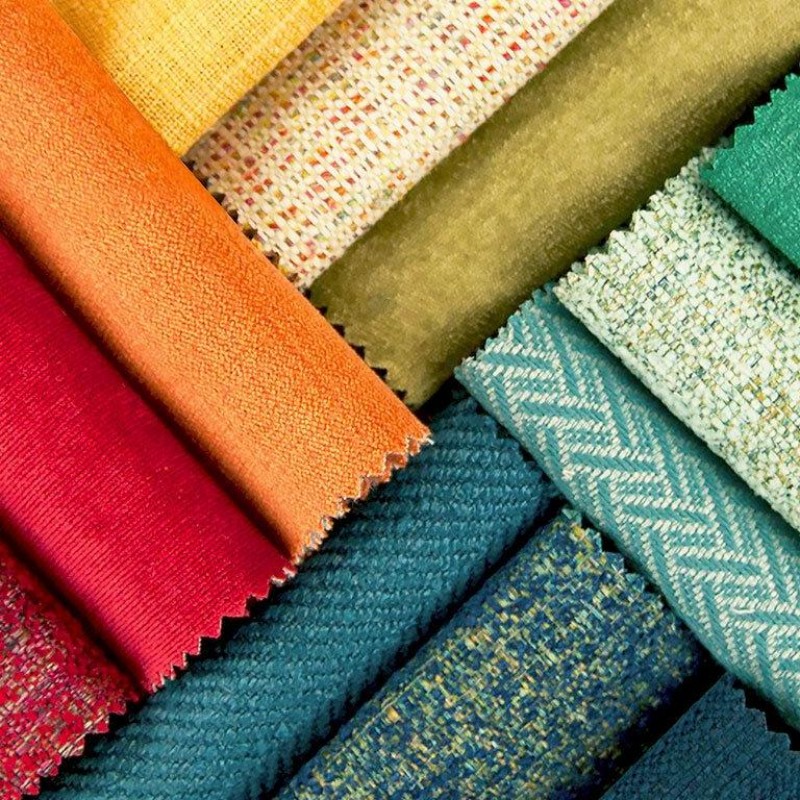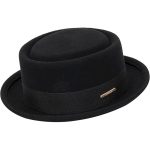Understanding the types of fabrics is essential for anyone interested in sewing, fashion design, or simply making informed purchases in the apparel and home decor markets. Fabrics serve both functional and aesthetic roles, and the right fabric can elevate a garment’s style and make a statement. From the luxurious feel of silk to the rugged durability of denim, various fabrics can significantly influence both the aesthetic appeal and functionality of clothing or home items. With a wide array of textiles available, it becomes crucial to know what sets each fabric apart and how to select the right type for different needs. In this comprehensive guide, we will explore the many types of fabrics, covering their origins, properties, benefits, and common uses. Whether you’re a novice looking to start sewing or a seasoned designer wanting to expand your knowledge, this article will provide valuable insights into the fascinating world of fabrics.

Understanding the Basics of Fabric
Before diving into the specific types of fabrics, it is important to grasp basic concepts related to fabric construction and terminology.
What Constitutes Fabric?
Fabric is created from fibers that are woven, knitted, or otherwise pressed together to form textile structures.
- Fibers: The smallest units in textile creation can be natural or synthetic. Natural fibers include cotton, wool, and silk, while synthetic fibers encompass polyester and nylon.
- Yarn: People spin fibers into yarn before weaving or knitting them into fabrics. The thickness, twist, and type of yarn can greatly influence the texture and durability of the fabric.
Fabric Construction Methods
Fabrics can be designed using various techniques, each contributing to the characteristics of the final product.
- Woven Fabrics: People create woven fabrics by interlacing yarns both horizontally (weft) and vertically (warp). This method often offers durability and exists in many patterns, such as plain, twill, and satin.
- Knitted Fabrics: People form knitted fabrics by interlocking loops of yarn, creating fabrics that tend to be stretchy and comfortable. Common types include jersey and rib knit.
- Non-Woven Fabrics: Manufacturers make non-woven fabrics by bonding fibers together through chemical, mechanical, or thermal means. People often use non-woven fabrics for disposable items, insulation, and filtration.
Natural Fabrics
Natural fabrics derive from plant and animal sources, known for their breathability and comfort. Below are some popular types of natural fabrics.
Cotton
Cotton ranks among the most commonly used natural fabrics globally, cherished for its softness and versatility.
- Characteristics: Cotton remains breathable, hypoallergenic, and durable. It absorbs moisture easily, making it ideal for warm weather.
- Uses: People utilize cotton fabrics extensively in clothing, bed linens, and towels. Varieties include denim, muslin, and sateen.
Linen
Linen comes from the fibers of the flax plant and has gained a reputation for its coolness and freshness in warm weather.
- Characteristics: Linen provides breathability and moisture-wicking capabilities while being strong. While it wrinkles easily, many consider this part of its charm.
- Uses: People frequently use linen for summer clothing, tablecloths, and bed linens. It often blends with cotton for added softness.
Wool
Wool derives from the fleece of sheep and has gained popularity for its warmth and insulating properties.
- Characteristics: Wool remains naturally elastic, breathable, and moisture-wicking. It effectively regulates temperature, making it suitable for both warm and cold weather.
- Uses: People commonly find wool in sweaters, coats, and suits. Variants like merino wool and cashmere (from goats) also delight wearers.

Silk
Silk, a luxurious fabric produced by silkworms, possesses a soft feel and elegant sheen.
- Characteristics: Lightweight and breathable, silk remains hypoallergenic. Its beautiful drape adds a sense of luxury to garments.
- Uses: Designers widely use silk in formal wear, scarves, and lingerie. Silk blends with other fabrics for enhanced performance.
Hemp
Hemp stands out as an eco-friendly fabric made from the stalks of the hemp plant, gaining attention for its sustainability.
- Characteristics: Hemp fabric remains durable, breathable, and naturally resistant to mold and UV light. With each wash, it becomes softer.
- Uses: Eco-conscious clothing lines often utilize hemp, which also proves popular for bags and accessories.
Synthetic Fabrics
Synthetic fabrics arise from man-made chemical compounds, offering unique properties that make them suitable for various applications.
Polyester
Polyester emerges as one of the most widely used synthetic fabrics in the world, celebrated for its strength and wrinkle resistance.
- Characteristics: Polyester remains durable, quick-drying, and resistant to shrinking or stretching. It often mimics the feel of natural fibers while offering practical benefits.
- Uses: People frequently find polyester in clothing such as blouses, sportswear, and outerwear, as well as in home furnishings like curtains and tablecloths.
Nylon
Nylon ranks among the most popular synthetic fabrics, known for its exceptional strength and elasticity.
- Characteristics: Lightweight and resistant to abrasion, nylon exhibits excellent stretchability, retaining its shape while drying quickly.
- Uses: You often find nylon in activewear, swimwear, and outerwear. It serves well in accessories like tights and backpacks.
Acrylic
Acrylic often substitutes for wool, providing warmth and softness while maintaining a lightweight design.
- Characteristics: Soft, stretchable, and resistant to moths, fading, and moisture, acrylic holds its shape well, making it ideal for sweaters.
- Uses: Designers commonly use acrylic in knitwear, jackets, and blankets, as it enhances comfort while keeping costs down.
Spandex
Known as elastane or Lycra, spandex boasts extraordinary elasticity.
- Characteristics: Extremely stretchy, lightweight, and durable, spandex excels in maintaining its shape after stretching.
- Uses: You frequently find spandex in activewear, swimwear, and undergarments. Many garments feature a small percentage of spandex blended with other fabrics to enhance comfort and fit.
Rayon
Rayon qualifies as a semi-synthetic fabric, produced from regenerated cellulose fibers.
- Characteristics: Soft, breathable, and draping beautifully, rayon often resembles silk due to its smooth texture and sheen.
- Uses: People commonly use rayon in dresses, blouses, and upholstery. It can also blend with other fibers to enhance texture.
Blended Fabrics
Blended fabrics combine natural and synthetic fibers to exploit the advantages of both types while minimizing disadvantages.
Cotton-Polyester Blends
Cotton-polyester blends rank as ubiquitous choices in the fashion industry because of their comfort and durability.
- Characteristics: This blend combines the softness of cotton with the durability of polyester. It resists wrinkling and retains shape better than pure cotton.
- Uses: You often find cotton-polyester fabrics in t-shirts, casual wear, and work uniforms, making them versatile options for everyday clothing.
Wool-Polyester Blends
Wool-polyester blends bring the benefits of wool’s warmth with the durability of polyester, providing comfort and practicality.
- Characteristics: This combination provides warmth while remaining lightweight and resistant to wrinkles and shrinkage, enhancing the fabric’s softness.
- Uses: Commonly found in suits, outerwear, and warm knitwear, these blends enhance comfort while keeping the benefits of warmth.
Linen-Cotton Blends
Combining linen and cotton offers the breathability of both fabrics, making it suitable for warm weather.
- Characteristics: Typically softer and smoother than 100% linen, these blends maintain the breathable properties while offering added comfort.
- Uses: Linen-cotton blends show up in summer clothing, table linens, and casual apparel, combining comfort and elegance beautifully.
Specialty Fabrics
Specialty fabrics serve specific purposes in functional and fashion contexts, often featuring unique qualities.
Denim
Denim arises as a rugged cotton twill fabric famed for its durability and iconic blue color.
- Characteristics: Strong and usually made to withstand wear and tear, denim can be rigid or flexible depending on the fabric weight and treatment.
- Uses: You predominantly find denim in jeans, jackets, and casual garments. Its versatility and timelessness contribute to its enduring appeal.
Twill
Twill defines a type of weave that creates diagonal patterns, noted for durability and structured appearances.
- Characteristics: Twill offers a resistant surface that is less prone to wrinkling. It can be woven from various fibers, including cotton and wool.
- Uses: Commonly used in dress shirts, pants, and jackets, twill adds sophistication and style.
Velvet
Velvet creates a luxurious fabric that has a soft texture and rich appearance, often associated with formal wear.
- Characteristics: Made from silk, polyester, or cotton, velvet is plush and offers a unique play of light due to its pile.
- Uses: Frequently used in evening wear, upholstery, and accessories, velvet adds an element of opulence to any outfit.
Organza
Organza represents a thin, plain weave fabric often made from silk or polyester, known for its lightness and crispness.
- Characteristics: Sheer and slightly stiff, organza creates soft volume in garments, making it popular in formal wear.
- Uses: Commonly found in evening gowns, bridal wear, and decorative accents, organza enhances elegance in layering.
Tulle
Tulle serves as a lightweight, fine netting fabric, often used in fashion for its airy quality.
- Characteristics: Sheer and netted, tulle resembles gauze and is often starched for extra stiffness, allowing structured shapes.
- Uses: Primarily found in veils, skirts, dresses, and embellishments, tulle is popular for formal wear and special occasions.
How to Choose the Right Fabric for Your Project
When embarking on a new sewing project or selecting a piece of clothing, understanding how to choose the right fabric is crucial. Here are some tips to help you make informed decisions.
Consider the Purpose
Determine the purpose of the fabric to ensure it meets your project’s needs.
- End Use: If the garment or item is for everyday use, prioritize durability. For special occasions, you may wish to choose fabrics that provide elegance.
Evaluate Climate and Season
The climate and season will influence your fabric selection significantly.
- Warm Weather: Breathable fabrics like cotton and linen are ideal for summer garments, ensuring comfort in hot conditions.
- Cold Weather: For colder months, opt for heavier and warmer fabrics such as wool or fleece for insulation.
Focus on Care Instructions
Different fabrics come with varying care requirements. Consider how much effort you’re willing to dedicate to maintaining the fabric.
- Maintenance Level: Some fabrics need special care, like dry cleaning or hand washing. If you prefer low-maintenance fabrics, choose durable options like cotton-polyester blends.
Fabric Texture and Feel
The texture and feel of the fabric can profoundly influence comfort and perception.
- Touch: Always consider how a fabric feels against your skin. Soft, smooth fabrics are ideal for garments, while textured options can add visual interest.

Conclusion: Exploring the Diverse Types of Fabrics
Understanding the types of fabrics is vital for anyone passionate about fashion, design, or textiles. Each fabric type brings its distinct set of characteristics, making it suitable for various applications—from everyday wear to luxurious evening attire. As you’ve discovered through this guide, natural fabrics like cotton, wool, and silk offer comfort and breathability, while synthetic fabrics such as polyester and nylon provide durability and ease of care.
Exploring blends and specialty fabrics can open up creative possibilities in garment construction, while knowing how to choose the right fabric for your project will ensure you achieve the desired look and functionality. Each fabric contributes uniquely to the world of textiles, making it essential to consider your specific needs when selecting materials.
With this comprehensive understanding, you can confidently approach your upcoming sewing projects, fashion choices, or interior design ventures. Don’t hesitate to experiment with various types of fabrics to discover the perfect fit for any occasion. Enjoy the creative exploration of fabrics and their endless possibilities!

